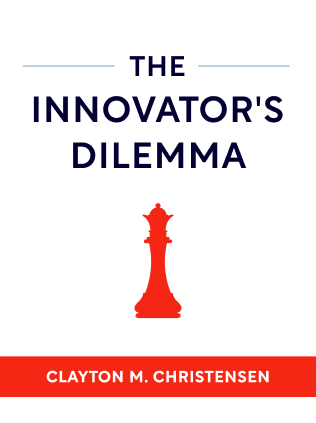

This article is an excerpt from the Shortform summary of "The Innovator's Dilemma" by Clayton M. Christensen. Shortform has the world's best summaries of books you should be reading.
Like this article? Sign up for a free trial here .
What is the technology S-curve? What does it represent for disruptive innovation?
The technology S-curve is a framework that guides timing for innovations. This model is best suited for sustaining innovations.
Read on to understand the technology S-curve and its appropriate usage.
The Technology S-Curve Framework
Some businesses use the technology S-curve framework to determine when to adopt innovations—but the technology S-curve framework only applies to sustaining innovations that replace products within the same value network.
When a technology is first developed, progress is slow and the slope of the S-curve is gradual. Then, the slope steepens as improved understanding and engineering bring rapid progress. Finally, the slope nearly plateaus as technology has been improved and refined so much that progress slows significantly.
When a new sustaining technology emerges, the S-curves of the old and the new technologies overlap: The new technology is in the early acceleration stages while the old technology begins to plateau. The most successful companies transition from the old to the new technology at the moment that the two curves intersect, shown on the graph. The companies that do this best are the established firms.
However, when a disruptive technology emerges, its technology S-curve is on an entirely different graph because, by definition, it serves a different market and exists in a different value network. At a certain point, once the disruptive technology’s performance has improved enough, it may invade the previously established market and replace the old technology, in which case it would look like these graphs.
Predicting Flash Memory’s Fate
Flash memory was developed in the 1980s and threatened to disrupt the disk drive industry. Initially, flash memory attracted customers outside the computer value network, including makers of heart monitors, cell phones, industrial robots, and modems. (Shortform note: Today, flash memory is ubiquitous and is used in solid-state hard drives, smartphones, USB flash drives, and digital cameras.)
Would flash memory invade the disk drive value network and upend established firms’ dominance? Here’s how each of the theories we discussed would guide predictions.
1) The Organizational Structure Framework would categorize flash memory as a radical technology. As such, established firms that were set up to facilitate a different workflow and communication structure than flash memory demanded could only develop flash memory products if they created independent entities to lead the effort.
This held true: Seagate bought a 25 percent equity in SunDisk Corporation (which was later renamed SanDisk) to design and develop the flash memory cards.
2) The Capabilities Viewpoint would recognize that, although flash memory used significantly different technology than disk drives, disk drive makers had all the knowledge they needed to succeed. Established firms were experienced in designing technology, buying component parts from suppliers, coordinating products’ assembly, and marketing and selling them. The companies could apply these general capabilities to producing flash memory and competing with startups.
Seagate did, in fact, use its capabilities to go into business with SunDisk, find component suppliers and a manufacturer, and then market the products itself.
3) The Technology S-Curve Framework would note that the rate of improvement of disk drive technology had not yet slowed to a point that the S-curve of the new technology’s progress could intersect with the old technology’s S-curve. That means that disk drives were not yet at risk of being replaced by flash memory.
4) The Value Network Framework would disregard established firms’ organizational structures and capabilities as reliable predictors of whether the firms would be toppled, and it would disregard the S-curve framework because that only applies to sustained technologies. Instead, the Value Network Framework would predict whether established firms would invest in their own flash memory products based on their customers’ interest.

———End of Preview———
Like what you just read? Read the rest of the world's best summary of Clayton M. Christensen's "The Innovator's Dilemma" at Shortform .
Here's what you'll find in our full The Innovator's Dilemma summary :
- Christensen's famous theory of disruptive innovation
- Why incumbent companies often ignore the disruptive threat, then move too slowly once the threat becomes obvious
- How you can disrupt entire industries yourself






